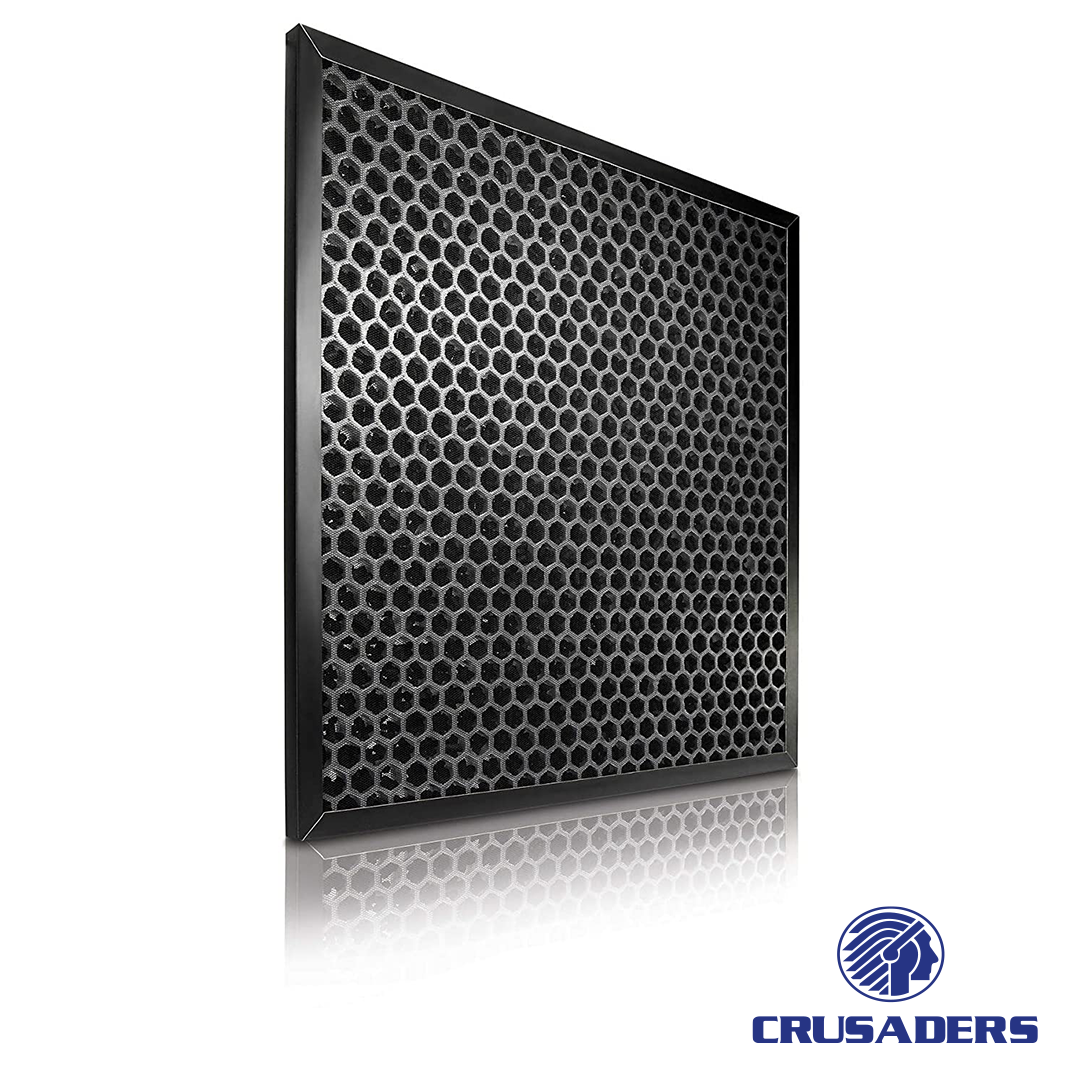

If you use an air purifier, or are buying one, you should be familiar with activated carbon filters and their benefits to choose from air purifiers. These clever filters are major combatants of everything from smoke, VOC and other gaseous pollutants to unpleasant odors. They rely on the process of adsorption to remove and capture impurities, so that all you’re left with is fresh, breathable air.
Here is a closer look at how these small filters can make a big improvement in your overall air quality.
WHAT IS ACTIVATED CARBON FILTER?
Activated Carbon filter, or charcoal filter, is a bed of activated carbon typically in granular or powdered block form, and consists of millions of tiny absorbent pores. This air filter has been treated to be extremely porous, and this is the popular filtration against gases, chemicals and Volatile Organic Compounds (VOCs). However, the Activated Carbon filter can’t remove fine particles like dust, dust mites, pet dander or pollen from the air. For that you need the HEPA filter.
Importance of activated carbon filter in an air purifier
In air purifiers, the Activated Carbon filter is mostly used in conjunction with the HEPA filter which is used to capture the other tiny particles like dust, lint, mold spores, pet dander and pollen.
Activated Carbon filter provides an additional layer of filtration going beyond just the particulate filtration provided by HEPA filters.
HOW LONG DOES ACTIVATED CARBON LAST?
The Activated Carbon filter is a very important air filter in all the air purifier systems, but it can only last for a short time. The Activated Carbon filter needs to be changed every few months to be efficient. This is because of the adsorption process that increasingly fills up the pollutants inside the activated carbon bed. Once the bed is saturated, the filter can no longer be capable of taking in more pollutants.
You can also reuse the Carbon activated air filter because of the porous nature of activated carbon, this air filter can be recycled by putting it under the sun for a couple of hours every 2-3 months, then you can reuse the air filter completely. However, you can only reuse the Activated Carbon filter for a maximum of 3-4 times like this, then you must replace the carbon filter so it can work against the smoke, odors and chemicals.
You can’t wash your carbon filter and it should be kept away from high moisture as that can be damaging to the porous nature of activated carbon.
What should you keep in mind before buying a carbon filter?
It is really important to see that the Activated Carbon filter is densely populated and that can be seen by taking out the filter and looking through it. You should be able to see it filled in the honeycomb design so as to ensure that the entire air has to pass through the carbon filter making sure that all the smoke, VOC, gaseous pollution and smell is absorbed and neutralized in every pass through.
The air needs to spend the maximum possible amount of time passing through the carbon. In the air filter industry, this is known as “dwell time.” A filter with a good amount of carbon of sufficient thickness and high dwell time is going to be far more effective than a filter with a thin layer of carbon.
Type of Activated Carbon used
Porous carbons containing several types of inorganic impregnate such as iodine, silver and cation’s such as Al, Mn, Zn, Fe, Li, Ca have also been prepared for specific application in air pollution control especially in museums and galleries. Due to its antimicrobial and antiseptic properties, silver loaded activated carbon is used as an adsorbent for purification of domestic water.
Conventional design in honeycomb grid like in our model XJ-2100 and XJ-6000T.

Layered Cocunut Carbon on HEPA, much larger absorption and surface area. Used in our cylindrical models XJ-3500H and XJ-4500H

Concept of Iodine number
Many carbons preferentially adsorb small molecules. Iodine number is the most fundamental parameter used to characterize activated carbon performance. It is a measure of activity level (higher number indicates higher degree of activation,) often reported in mg/g (typical range 500–1200 mg/g).
Crusaders Air Purifiers use Iodine Value 1100 grade Activated Carbon.
Why Crusaders Air Purifier?
When you are looking for an air purifier for your home or office, it is important to keep certain things in mind like: –
- Filtration Technology
- CADR
- After Sales Cost of Spare Filters
Crusaders air purifier works best as it has activated carbon filter along with HEPA filter, Ionizing filter, TiO2 photo-catalyst filter and UV filter. These special features not only help get rid of fine particulate matter (upto PM0.1) but also removes bad odor, gaseous pollutants, bacteria and viruses in the air persisting indoor.
Crusaders has priced its filter set (consisting of Pre Filter, HEPA filter, Activated Carbon Filter & TiO2 photo-catalyst filter) at very affordable levels cosidering the size and the grade of our filters. We use an H14 HEPA and an IV 1100 grade Activated Carbon filter.
UV is LED bulb, and has a life of at least, 15,000 hours. Ionising Diode also has a long life of more than 10,000 hours.
For latest updates and information, visit our Facebook Page.